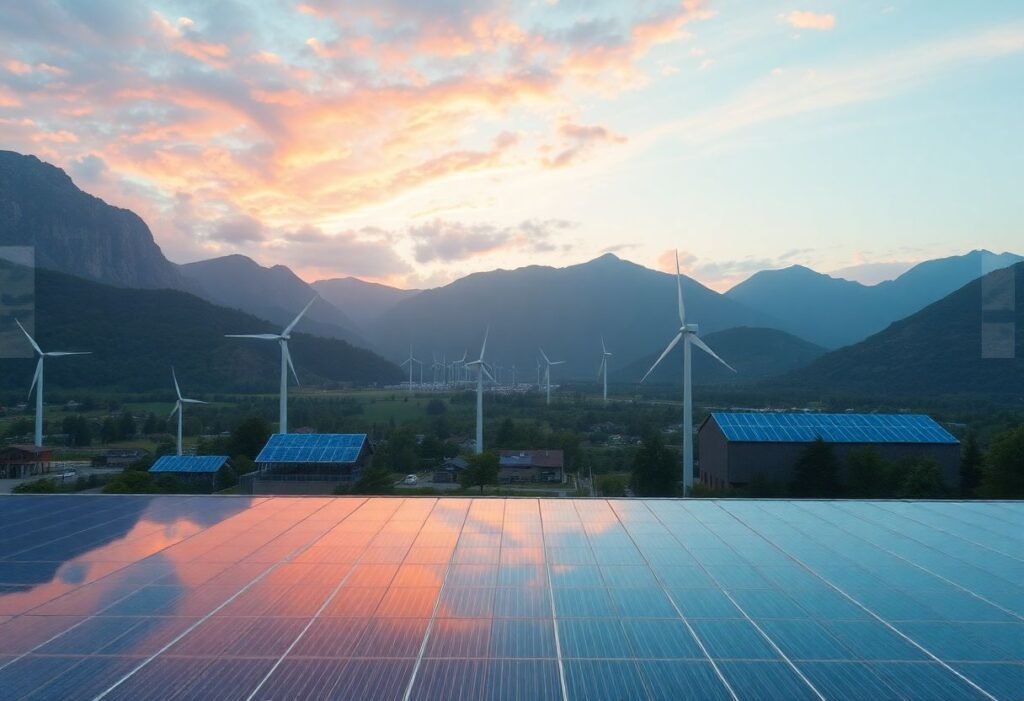The future of renewable energy is not just a vision but a reality that is reshaping our world. By 2025, we anticipate significant innovations that will accelerate the transition towards sustainable energy sources. This article explores the promising advancements in renewable energy technologies and their potential impact on innovation.
Advancements in Solar Energy Technology
Solar energy has made remarkable strides, particularly with innovations in photovoltaic (PV) materials. The emergence of perovskite solar cells is a game changer, allowing for higher efficiency rates and lower production costs. New manufacturing techniques enable these cells to be lightweight and flexible, making them suitable for a range of applications from rooftops to wearable technology. With ongoing research aimed at enhancing their longevity and performance in varying weather conditions, solar energy adoption is set to increase dramatically.
Wind Energy Innovations
Wind energy technology is evolving rapidly with the introduction of larger and more efficient turbines. Offshore wind farms are becoming increasingly common, taking advantage of stronger ocean winds. Furthermore, innovations like vertical axis wind turbines (VAWTs) offer new possibilities for urban environments. These turbines can generate power in lower wind conditions and can be effectively integrated into building designs. The combination of these technologies is expected to deliver substantial energy output while minimizing ecological footprints.
Energy Storage Breakthroughs
One of the significant barriers to maximizing renewable energy utilization has been energy storage. Innovations such as advanced battery technologies and other storage solutions are addressing this challenge. Lithium-sulfur batteries, for example, promise longer lifespans and greater energy densities compared to traditional lithium-ion batteries. Furthermore, developments in thermal energy storage can store excess heat generated during the day for use at night, significantly enhancing the reliability of renewable energy sources.
Smart Grids and Automation
The integration of renewable energy into existing power grids is becoming more sophisticated with innovations in smart grid technologies. These grids utilize data analytics and automation to improve the efficiency of energy distribution and use. By implementing real-time monitoring systems, utilities can better respond to energy demands and optimize the use of renewable sources. Smart grids not only ensure energy reliability but also help in reducing greenhouse gas emissions associated with traditional energy systems.
Hydrogen as a Renewable Energy Carrier
Hydrogen is emerging as a viable renewable energy carrier due to its versatility and storage capability. Innovations in electrolyzer technologies are improving the efficiency of hydrogen production from renewable sources. This green hydrogen can be utilized in fuel cells to power vehicles or be injected into the natural gas grids to reduce carbon emissions. As the infrastructure for hydrogen production and distribution develops further, it is expected to play a pivotal role in the global energy transition by 2025.
Global Policy and Investment Trends
Government policies and investment trends are crucial in shaping the future of renewable energy. Many countries are setting ambitious renewable energy targets and providing incentives for businesses and consumers to adopt clean technologies. International collaborations on renewable energy projects are becoming more commonplace, leading to shared innovations and knowledge. With substantial investments expected to funnel into the sector over the next few years, we can anticipate further advancements in the technologies driving the renewable energy revolution.
Disclaimer: The information provided in this article is for informational purposes only and should not be considered professional advice. Always seek the guidance of qualified professionals regarding any energy system.





















